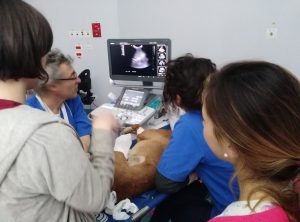Evaluation of blood and bone marrow in selected canine vector-borne diseases
De Tommasi AS, Otranto D, Furlanello T, Tasca S, Cantacessi C, Breitschwerdt EB, Stanneck D, Dantas-Torres F, Baneth G, Capelli G, de Caprariis D.
Evaluation of blood and bone marrow in selected canine vector-borne diseases
Parasit Vectors. 2014 Dec 2;7:534. doi: 10.1186/s13071-014-0534-2
Scarica la pubblicazione
Abstract
BACKGROUND: Bone marrow (BM) is a major hematopoietic organ that can harbour a variety of vector-borne pathogens; however, knowledge of BM pathological changes in dogs infected with vector-borne pathogens is limited. Thus, the aim of the present study was to assess the pathological changes in canine BM associated with natural infections by four vector-borne pathogens, as well as to determine the relationships between such changes and abnormalities of the peripheral blood.
METHODS: Cytological disorders and pathological changes of the BM of 83 dogs naturally-infected with one or more of four vector-borne pathogens (i.e., Anaplasma platys, Leishmania infantum, Babesia vogeli and Hepatozoon canis) were evaluated and compared with the corresponding hematological findings.
RESULTS: Dysgranulopoiesis and dysmegakaryocytopoiesis were the most frequently observed BM abnormalities in infected dogs. Erythroid suppression, and lymphocytic, monocytic and macrophage hyperplasia were also observed. Interestingly, associations between suppression and hyperplasia of specific cell lines in the marrow and corresponding changes in numbers of circulating peripheral blood cells were not observed.
CONCLUSIONS: Infections with one or more of the vector-borne pathogens examined in this study should be considered as differential diagnoses for secondary dysmyelopoiesis.






 Il Direttore Sanitario Dott. Marco Caldin
Il Direttore Sanitario Dott. Marco Caldin